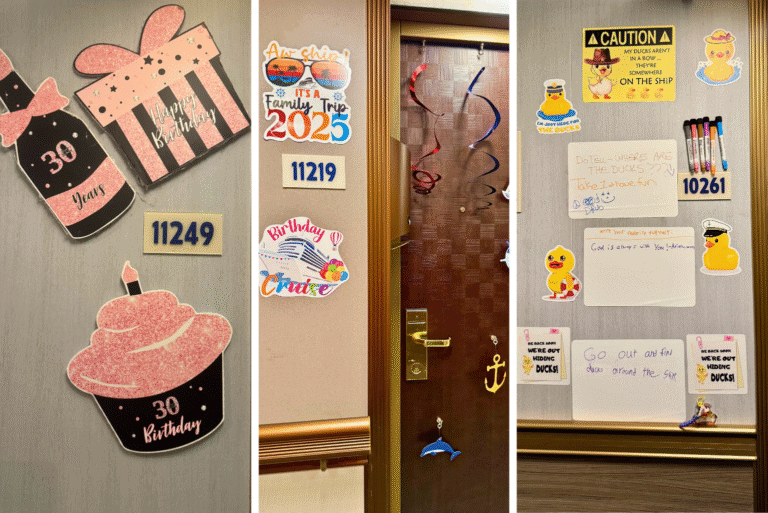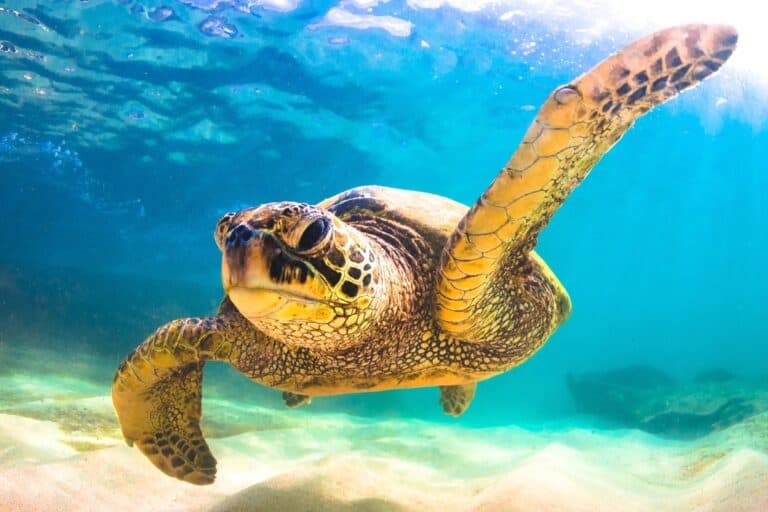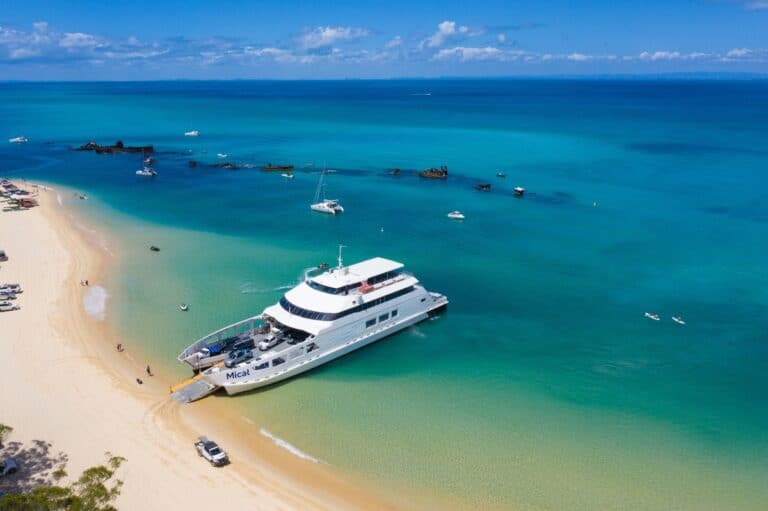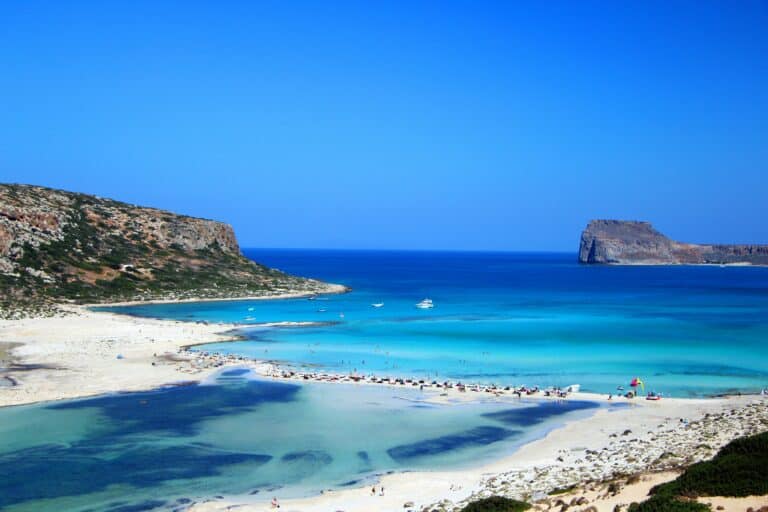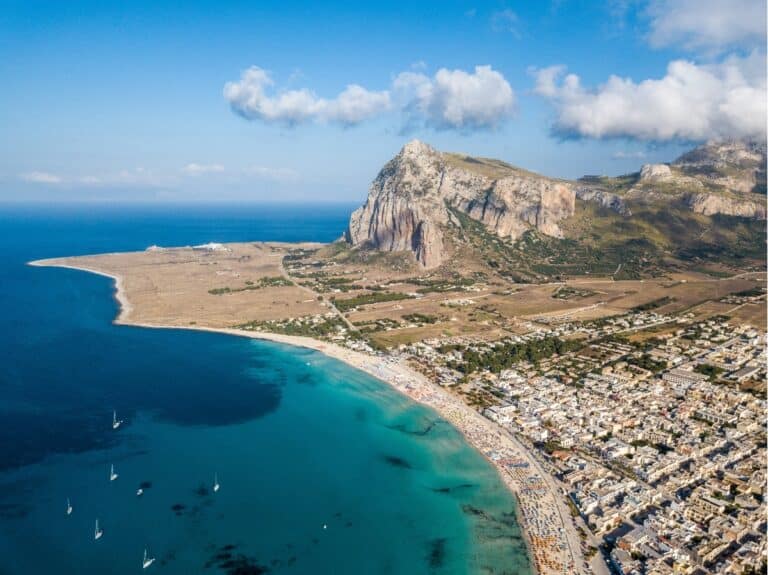Crete Snorkeling: Best Spots in the South & What You Need To Know
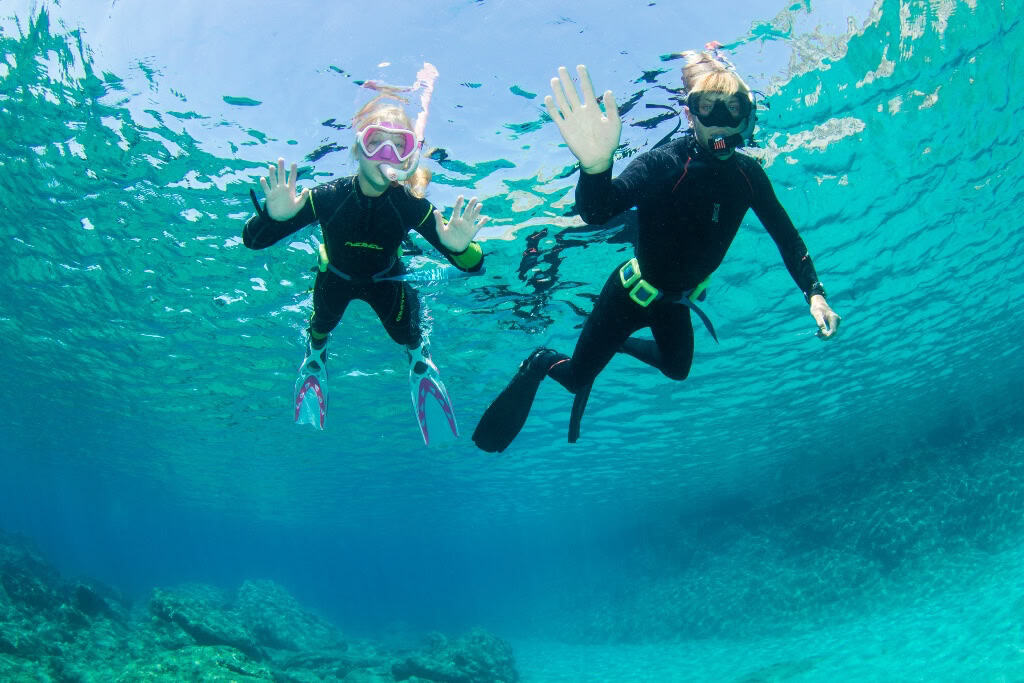

Looking for the best Crete snorkeling spots?
The island’s southern coast is known for its clear waters, rich marine life, and quieter beaches.
I’ve been to Crete and explored some of its beautiful beaches, but to create a Crete snorkelling guide that goes beyond the usual spots, I turned to local experts.
I spoke with Paul Koblens and Olivier Lamesch from Dive2gether, a dive center based in Plakias that’s spent years exploring these waters. They shared practical tips, favorite snorkelling spots, and what makes southern Crete such a standout for both beginners and experienced ocean lovers.
Read on for the top snorkelling spots in southern Crete and how to make the most of your time in and out of the water—straight from the locals who know it best.
PLAN YOUR TRIP WITH MY FAVORITE RESOURCES
Best accommodation site: Booking.com
Book top-rated tours: GetYourGuide.com
Need wheels? Rentalcars.com
Southern Crete Snorkelling Overview

If you want a laid-back swim, are travelling with kids, or hoping to spot an octopus, the south is a great choice.
Local guides in Plakias say snorkeling in the south is calmer and less crowded than the busy north.
You’ll find quiet coves, rocky reefs, and clear blue water—perfect for exploring marine life close to shore. It’s a place to slow down, take your time, and enjoy the sea.
Many of the best snorkelling spots are easily accessible from shore, which makes them perfect if you’re with kids or simply want a hassle-free day by the water.
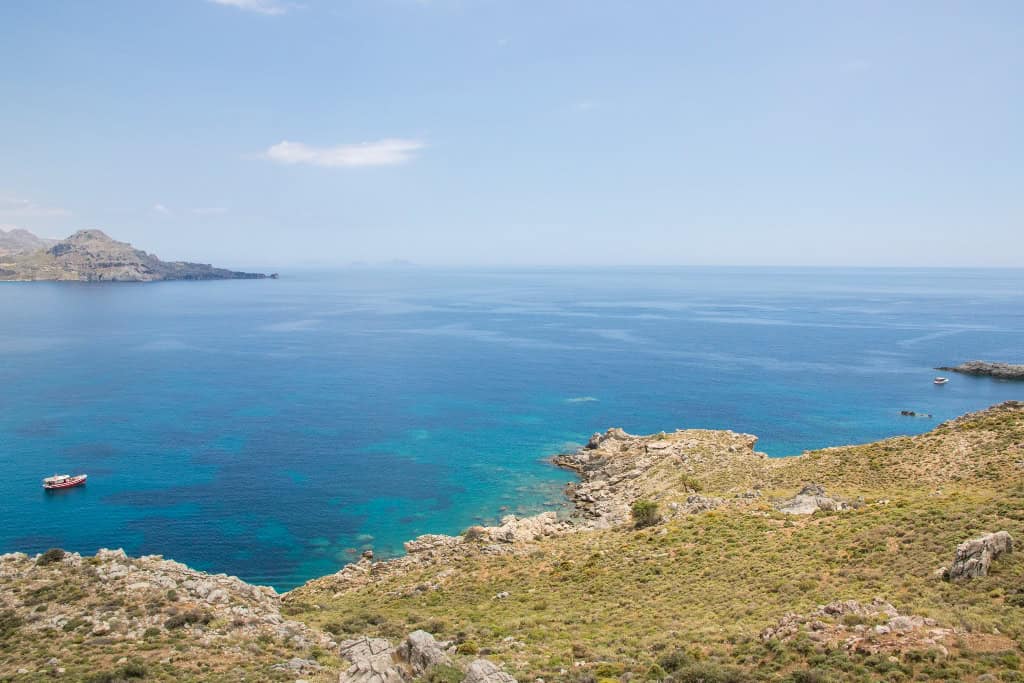
On calm days, visibility can be incredible—so clear you might spot fish and seagrass beds before you even dip your head in.
Some areas do get breezy, but local guides know the coastline well and shared that it’s usually easy to find a sheltered, snorkel-friendly spot.
Based on their experience guiding guests in the region, southern Crete offers a peaceful yet rewarding snorkelling experience—one that’s accessible, educational, and full of natural beauty.
Top Snorkelling Spots in Southern Crete (According to the Experts)
1. Shinaria Beach
Shinaria Beach is one of the most sheltered beaches from the strong north winds.
The bay is surrounded by high cliffs and faces west, which helps block the wind and keep the water calm inside the bay.
It’s a great option even on breezy days—just be mindful not to venture outside the bay, as the moment you leave the shelter, the north wind can create strong surface currents.

The water here is usually crystal clear, with good visibility even near the shore.
It’s a mix of rocky formations and sandy patches, which makes it interesting to explore with a mask and snorkel.
Because the bay is more protected, it’s also a great choice for families or less confident swimmers looking for a calm, scenic place to snorkel.
Local tip: Grab a bite at Pandelis Tavern just above the beach—it has delicious food and a stunning view over the bay.
2. Limanaki
This little bay on the edge of Plakias village is where local kids learn to swim—and for good reason. Black rock formations stick out of the water and naturally protect the bay from waves and swell.
The water here is shallow, calm, and impressively clear. And with more marine life than you’d expect in such an accessible spot.
If you’re a more confident snorkeller, head to the outer edge of the reef. This is where the water gets deeper and the marine life even more interesting.
Just keep an eye on your distance from shore and avoid venturing too far out alone. It’s always safer to snorkel with a buddy.
Bonus: The nearby cafés rent out sunbeds and serve food and drinks directly to your spot.
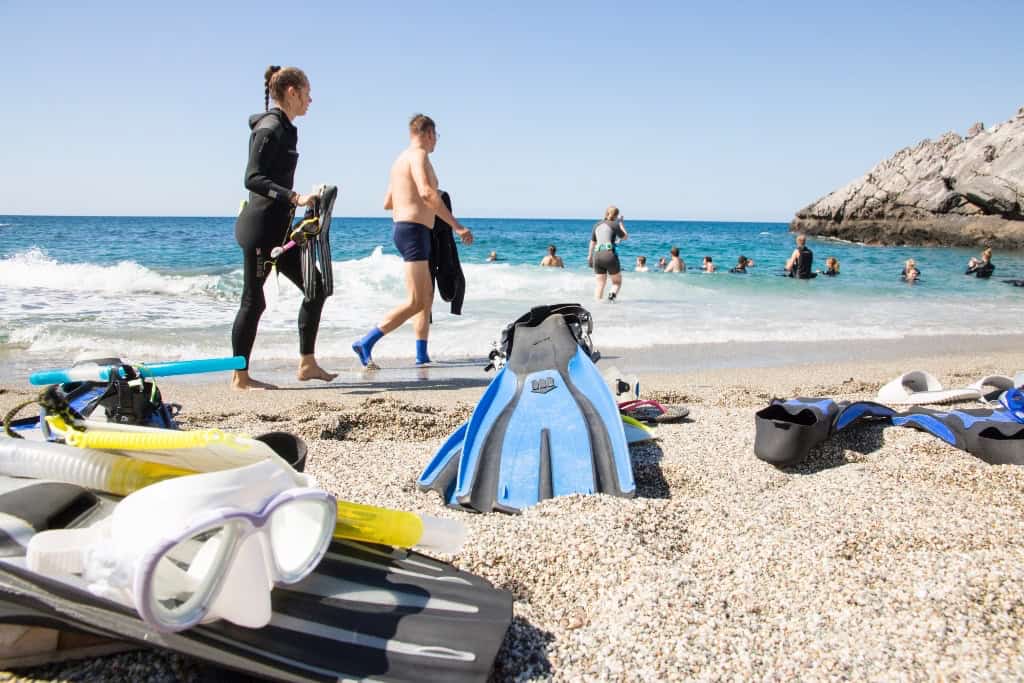
3. Paligremnos
Located at the far end of Plakias Bay, Paligremnos is another solid snorkelling spot, as recommended by local expert Paul. There is no beach service here, but it’s peaceful and naturally beautiful.
You’ll find shallow waters with a mix of seagrass meadows and rocky formations. This makes it a great area to explore at your own pace.
The beach itself sits beneath towering cliffs, which give the area a dramatic backdrop. And also help block some of the wind, especially in the mornings.
It’s a good spot if you’re looking for a quieter snorkelling session away from sunbeds and crowds. Just bring everything you need with you. There are no cafés or rentals here, so it’s more of a self-sufficient kind of stop.
Note from local experts: Most of Plakias Bay isn’t ideal for snorkelling. It’s exposed to the north wind, lacks reef structures, and has a sandy bottom—so there’s not much to see in the water. Stick to the sheltered ends or the smaller nearby bays for the best experience.

What Marine Life Can You See While Snorkelling in Southern Crete?
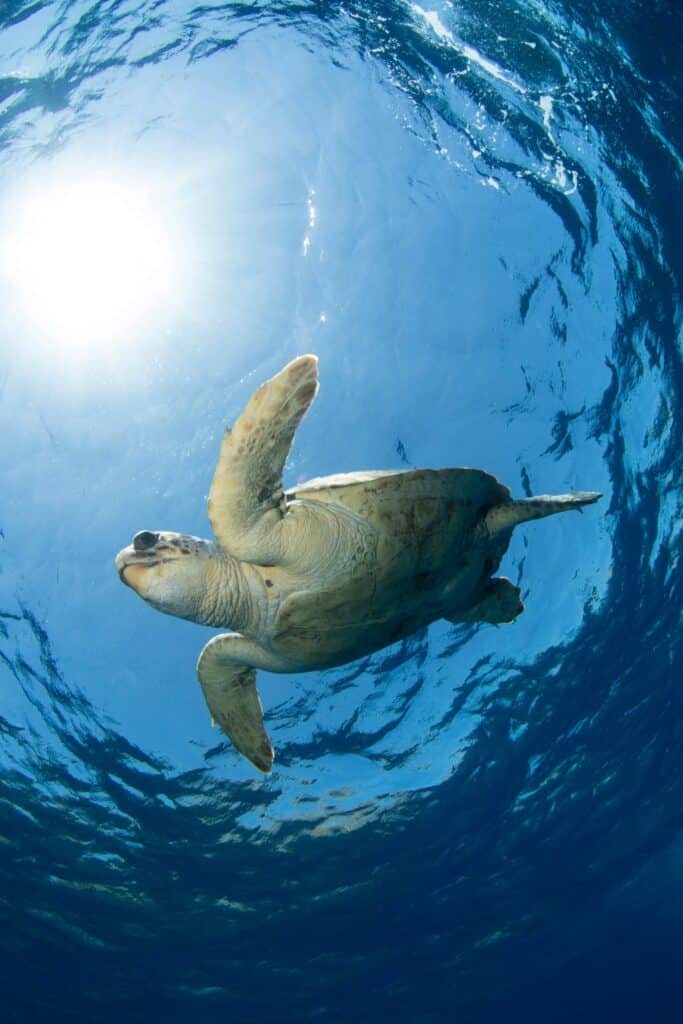
As one local guide explained, you’ll see a surprising amount of marine life in southern Crete. That means even in shallow water, close to shore.
Some of the bays are full of fish activity, especially around rocky areas and seagrass meadows. Sea bream and wrasse are common. And if you’re patient, you might even catch a glimpse of an octopus tucked into a crevice.
Sea sponges dot the seabed in some areas, adding texture and colour to the landscape.
You don’t need to go far or deep—just float and observe. The team often hears Crete snorkeling guests say they didn’t expect to see so much, especially in such calm and easy-to-access spots.
It’s not about ticking off a species list—it’s more about enjoying how lively and natural the underwater world feels here.
What to Do After Snorkeling in Crete
Let’s be honest—you’re not just coming to Crete for a quick dip. So when you’re ready to mix things up beyond the beach, here are a few great ways to spend your time:
👉 Snorkel somewhere unexpected—like the Kourtaliotiko Waterfalls.
One unforgettable experience you can try is a guided snorkelling trip to the Kourtaliotiko Waterfalls, run by a local dive center in Plakias.
The waterfalls themselves are spectacular, tucked away in a dramatic gorge, but fair warning: the water is cold—around 15°C.
To reach the most impressive part of the falls, you’ll need to swim through deeper water with a surface current, which makes this more of an adventure than a casual swim.
The trip is fully guided by professional instructors and includes everything you need—mask, snorkel, full-body wetsuit, and even a canyoning helmet.
👉 Try scuba diving
If you’ve always wanted to try diving yourself, the Discover Scuba Diving session gives you an easy, safe way to give it a go.
Or if you have a kiddo who is curious to explore below the surface, the PADI Bubble Maker course is a great place to start—it’s open from age 8.
👉 Go horse riding
You’ll ride through olive groves and canter along the 1.4 km shoreline of Plakias Beach—sea breeze in your face, freedom in full swing.
👉 Head over to Damnoni Beach
Here is where the wind is usually calmer and you’ll find paddleboats and SUP rentals through Damnoni Watersports.

👉 Hike one of Crete’s famous gorges
You’ve got options here – Samaria, Imbros, Patsos, or Aradena. These areas are not only stunning but also incredible biodiversity hotspots, filled with native plants and wildlife.
FAQ: Crete Snorkeling
Got questions about snorkelling in Crete? Here are a few quick answers to help you plan your trip with confidence.
Does Crete have good snorkeling?
Yes! Crete has some fantastic snorkelling, especially along the southern coast where the water tends to be clearer and the beaches less crowded.
You’ll find rocky reefs, seagrass meadows, and plenty of fish life—even just a few steps from shore.
It’s easy to access, safe for families, and full of hidden coves waiting to be explored.
Does Crete have coral reefs?
Not in the tropical sense. Crete doesn’t have colourful coral reefs like you’d find in Southeast Asia or the Caribbean.
Instead, you’ll see rocky reef formations, underwater caves, and seagrass beds—home to a variety of Mediterranean marine life.
It’s a different kind of beauty, but just as fascinating when you slow down and take a closer look.
How many days in Crete is enough?
It depends on how much exploring you want to do! For a relaxed trip with a mix of beach time, snorkelling, local food, and a few inland adventures, 5 to 7 days is a great starting point.
If you want to visit both the north and south coasts—or add diving, hiking, or cultural sights—giving yourself a full week or more will let you enjoy it without feeling rushed.
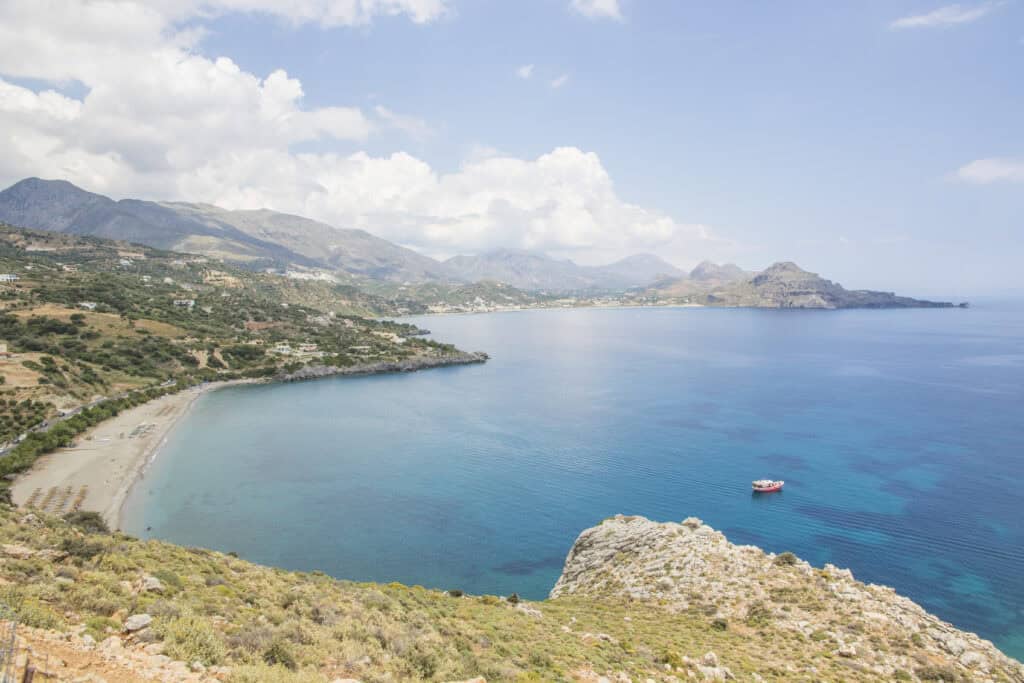
The Wrap-Up: Is Crete Snorkeling in the South Worth It?
Absolutely. If you’re looking for more than just a swim, the southern coast of Crete offers a quieter, more authentic snorkelling experience that’s ideal. It’s for those who want to slow down, float with intention, and really connect with the sea.
Snorkelling here isn’t about ticking boxes. It’s about feeling present, learning something new, and supporting the kind of travel that respects both nature and local knowledge.
Crete is calling—and the water’s ready when you are. Safe travels!
Curious to go deeper?
Take a look at my full guide to Diving in Crete or explore my interview with Dive2gether to hear why this part of the island is such a special place to dive and explore.


